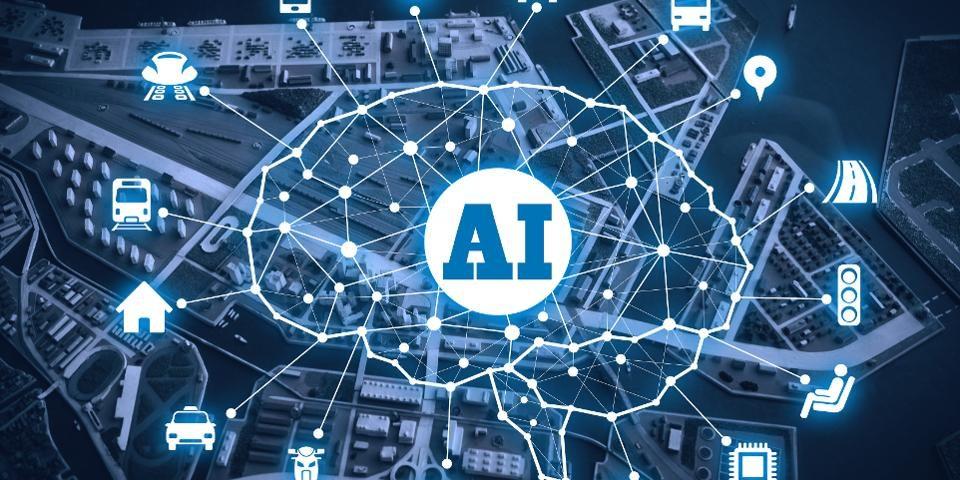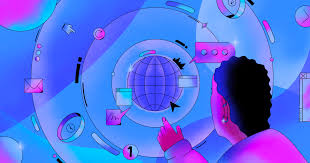Hello!
Over the past few years, conversational AI chatbots have become part of our personal lives. More importantly, they have become assets in many business workflows, from customer service to marketing.
Admittedly, the adoption of this technology has been much slower than the hype would suggest. However, little by little, it’s been attracting more and more interest.
 Lately, there were two variables fueling an unprecedented acceleration in the adoption of biomedical technologies.
Lately, there were two variables fueling an unprecedented acceleration in the adoption of biomedical technologies.
- First, the worldwide epidemic that pressured companies to automate and digitalize to keep up with demand.
- Second, far less dramatic, the no-code movement that opened the door to conversational AI to all.
In the following guide, I will give a synopsis of the present condition of AI, the no-code motion, and ways that the latter is very likely to shape the future of the technology.
The State of Conversational AI
Conversational AI is merely a peck from the AI world dispersing around the supply chain. Yet, lately it’s taken the spotlight. COVID-19 catastrophe, having closed down call centres and companies globally, showed us the future of company communication couldn’t do with it.
 The odds are that in the event that you’ve attempted interacting using a chatbot earlier, you have had one bad encounter.
The odds are that in the event that you’ve attempted interacting using a chatbot earlier, you have had one bad encounter.
Nevertheless, these failures aren’t a part of evidence that producing useful assistants isn’t feasible. It only reveals the intricacies and nuances of the job we will need to think about.
More to the point, despite these failures, both consumers and businesses are getting increasingly more receptive to the notion of virtual assistants. So, when it concerns the potential of chatbots, the inquiry is not whether to make a chatbot however when.
What do the Stats Say?
 For example, before the entire world pandemic catastrophe, Salesforce’s State of Service Report of 2018 demonstrated that 53 percent of those surveyed service organizations anticipated to utilize AI chatbots, amounting to some 136% increase rate.
For example, before the entire world pandemic catastrophe, Salesforce’s State of Service Report of 2018 demonstrated that 53 percent of those surveyed service organizations anticipated to utilize AI chatbots, amounting to some 136% increase rate.
This isn’t just because 71 percent of customers anticipate brands and companies to communicate together in real time but also due to the undeniable advantages of conversational automation, such as substantial cost savings.
A Word from the Experts…
These trends have intensified because the COVID-19 disaster struck on the world… Like most others, I used quarantine to pursue several jobs.
One of these was a succession of anti-podcasts with experts and experienced professionals in the region of conversational AI. The subject of conversation was the future of chatbots, and also the effect COVID had on the business.
 While the choices gleaned from person to person, there was a consensus about two themes:
While the choices gleaned from person to person, there was a consensus about two themes:
- Acceleration of adoption
- Opportunity for innovation across both the public and private sectors.
Public Sector Is Catching On
By way of instance, Cristina Santamarina from Mediktiv draws focus on conversational AI breaking up the ice with all the governmental associations:”…not just chatbot founders and businesses however official institutions such as governments and town halls and large organizations. WHO went created chatbots for various channels.”
Opportunity to Showcase Good Automation
 Brandon Fluharty, Strategic Account Solutions in LivePerson, sees that the sudden demand for user-conscious automation because a massive opportunity as the change to conversational AI has exploded”…we’re seeing a massive spike in demand.
Brandon Fluharty, Strategic Account Solutions in LivePerson, sees that the sudden demand for user-conscious automation because a massive opportunity as the change to conversational AI has exploded”…we’re seeing a massive spike in demand.
Evidently, this is, I believe, for our business […] that is a fantastic time to showcase great automation”
Time to Revision Ecosystems
Lauren Nham, product development director at Sutherland Labs, also, considers that the distribution shock COVID delivered through the whole customer care industry opened doorways to everything electronic and sees it as a massive opportunity for us to utilize conversational AI and”re-envision what the total consumer experience ecosystem resembles.”
Exposing Outdated Infrusturtes
 Chris Messina, technologist most famous for its creation of this hashtag, highlights the way the catastrophe discovered that”the present infrastructure and systems you were not actually setup for this kind of spike” and services which relied on traditional plans turned out user-hostile and no more time to meet people where they’re in with the requirement for simplicity, speed, and personalization.
Chris Messina, technologist most famous for its creation of this hashtag, highlights the way the catastrophe discovered that”the present infrastructure and systems you were not actually setup for this kind of spike” and services which relied on traditional plans turned out user-hostile and no more time to meet people where they’re in with the requirement for simplicity, speed, and personalization.
Getting Comfortable
What is even more intriguing, Roger Kibbe, developer evangelist in Samsung, points out:”… voice program use has gone up throughout COVID-19.” Why? He ventures that voice communication is indeed inherently social; it’s become more appealing in times of isolation.
Or, as Adam Cheyer, the inventor of Siri (Apple) & Viv (Samsung), it may be that the pandemic has broadened the tech relaxation of a lot of people and so more people are OK utilizing it”…for the very first time, a lot of men and women are becoming comfortable talking to machines frequently to individuals, like we’re doing today […] And I do not think that it’s a lot of jump today they are comfortable speaking to a pc, today, to begin to speak with an automatic helper, not another individual.”
Despite all of the challenges and shortcomings, COVID-19 revealed us that conversational AI isn’t only here to stay but to change and innovate how we speak both on an individual and company level.
The No-Code Movement
 But, conversational AI isn’t the only tech carrying the spotlight nowadays. The catastrophe caused yet another”hero” of this summertime, no-code platforms.
But, conversational AI isn’t the only tech carrying the spotlight nowadays. The catastrophe caused yet another”hero” of this summertime, no-code platforms.
As a result of no-code alternatives, not just companies but also communities, NGOs, and people could roll out crisis services quickly and economically at a fraction of the price at the most critical period of need.
And while no-code goes past conversational adventures, it had been the no-code chatbots and supporters who took to the point.
What Is No-Code?
Since the era of the net came about, online technician invention has only at the hands of web developers. That is bad news because just 0.5percent of the planet’s populace is capable of communicating.
What’s more, irrespective of how intelligent these coders are, making something rewarding nonetheless takes weeks, even months, as well as years of programming and learning. But over the last couple of decades, the no-code motion began to alter the landscape of invention.
Now, just about anybody with a laptop and wifi may build and publish a site, a program, or even a bot. In a matter of days or weeks.
The Cons
Obviously, most programmers consider no-code idle and maybe cheating.
 Yes, there are some drawbacks such as:
Yes, there are some drawbacks such as:
- Limitations — that the manufacturer is obviously restricted to what a specific tool can perform. They could excel in certain areas and lack others.
- Learning curve — though it is no-code, every platform still has its own learning curve, which could nevertheless be a deterrent if you’re in a rush.
- Insufficient management — what should the instrument which is now essential to your company stops supplying its own services?
Therefore, coders generally complain about the absence of control and freedom. But from a business standpoint, this argument falls apart.
After all, just how much freedom do you get under the stress of price, time, and labour requirements? Just how much control do you have in case you do not know the system your company is dependent upon, and every very simple shift is delayed from the course of command?
The Pros
 Thus, to most, no-code is far from being idle. On the contrary! It is a chance to unlock the automation alternatives. Solutions, which would have remained exclusive and laborious to companies with big budgets.
Thus, to most, no-code is far from being idle. On the contrary! It is a chance to unlock the automation alternatives. Solutions, which would have remained exclusive and laborious to companies with big budgets.
Employing no-code tools, for Example, to create conversational assistants permits for:
Quick Donation — You are able to get something working in days or weeks.
Cost efficacy — You are able to create complex solutions and workflows in a fraction of the price when constructing something like scratch.
Access — No-code tools have a very low barrier to get started (price – and – skill-wise)
Control — It lets you make changes, upgrades, and conduct upkeep straight, and on the move, you don’t have to await somebody else to look after the matter.
 Immediate experience-to-solution translation — using visual no-code tools, you can have your conversational AI helper designed by those who know best like your service group, your entrepreneurs, or dialog designers that know what the bot has to perform and how it must act in a particular use-case better compared to a programmer.
Immediate experience-to-solution translation — using visual no-code tools, you can have your conversational AI helper designed by those who know best like your service group, your entrepreneurs, or dialog designers that know what the bot has to perform and how it must act in a particular use-case better compared to a programmer.
Learning how to think like a programmer does — last but not least, these programs deliver coders and no-coders closer together, permitting non-technical folks to know about the”laws” of communicating without needing to take care of code.
Impact of No-Code on Conversational AI
Folks comprehend conversational AI as a thing overly complicated, something beyond reach. On the other hand, the more it is used, the less complex it is getting to create these kinds of assistants.
 Even firms like Samsung or even Google are attempting to supply developers with as numerous simplifications as you can.
Even firms like Samsung or even Google are attempting to supply developers with as numerous simplifications as you can.
Aside from the tech giants, there’s a vast array of no-code platforms and tools that work hard to enable manufacturers, entrepreneurs, companies, and people to design supporters. The outcome? A growing number of folks are capable of designing robots.
Therefore, the simplifaction of conversational helper development is just one of the vital elements which will form the future of this business. Despite its limitations, no-code has the Ability to donate by:
- Speeding up Conversational AI Adoption
By decreasing the price of development, labour intensity, and time needs, no-code platforms are creating conversational AI more reachable.
Smaller firms and even individuals have the ability to produce what was just possible for high-level programmers. Hence, no-code motion is very likely to play an integral part in the adoption of chatbots and conversational AI.
- Fueling Innovation
 Another benefit? No-code opens chatbot development to specialists from a huge array of backgrounds. Marketers, authors, clients support representatives, sales agents, health professionals, psychologists… Quite simply, those who believe otherwise and have a diverse skillset from the customary programmer. Such intermixing of abilities is very likely to lead in revolutionary ideas that will induce conversational AI forward.
Another benefit? No-code opens chatbot development to specialists from a huge array of backgrounds. Marketers, authors, clients support representatives, sales agents, health professionals, psychologists… Quite simply, those who believe otherwise and have a diverse skillset from the customary programmer. Such intermixing of abilities is very likely to lead in revolutionary ideas that will induce conversational AI forward.
- Breaking the Stigma
Still today, you will find stigmas surrounding chatbots and thus, standing in the way of broader adoption. “Translating” the code to something easier and easy-to-understand is very likely to help debunk a lot of these misconceptions. By making something clear, we not only more inclined to forgive mistakes but also to fix them.
Also read:
- The Complete Guide to Venue Selection
- How You Can Apply Flywheel Thinking Model to Your Company’s Budget
- Mastering SEO for Fintech Firms
Looking Forward
Both conversational AI and no-code motion are here in order to remain. Even better, they have the capability to enhance each other. Therefore, open doorways to advanced products and workflows which will form the company for a long time to come.
Thank you!
Join us on social media!
See you!






